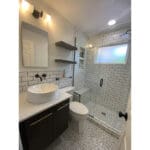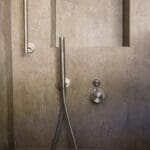Can You Put a Shower Head on an Exterior Wall?
Author: Thomas Borcherding | Updated On:
Can a Shower Head Be Placed on an Exterior Wall?
I understand why you may be tempted to relocate your shower head to an exterior wall. There is only so much you can do within the confines of a shower stall in terms of design.
Relocating the shower head may allow you to achieve the designs that you dream of. However, there are important considerations to be made regarding the matter.
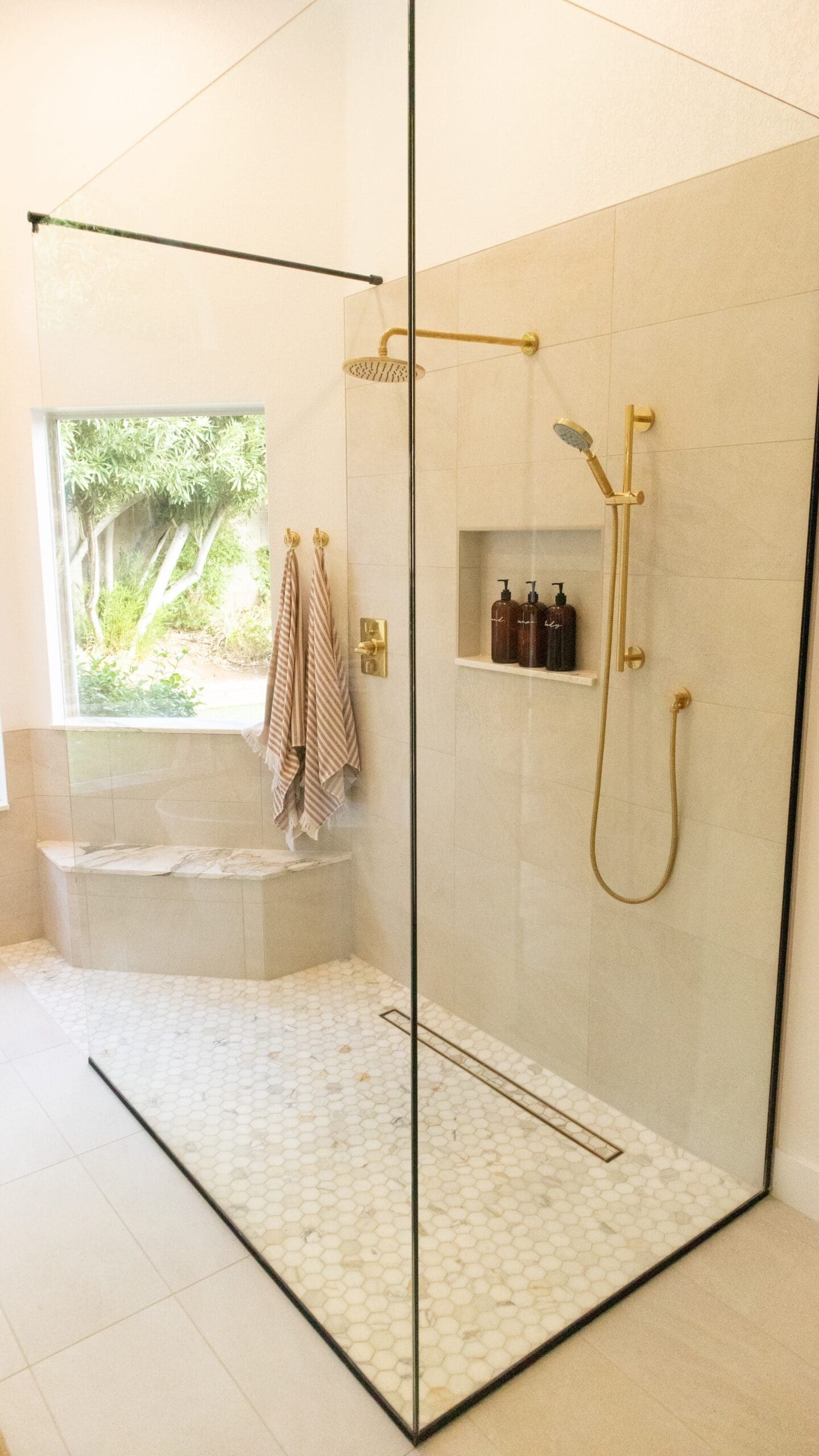
What Does Building Code Say About Exterior Wall Shower Heads?
It is always important to check your local municipality’s building code, as construction regulation is a state right, with most states further delegating the right to cities and counties.
However, most jurisdictions adopt the International Residential Code (IRC), although some may change it to their liking. Here is what the IRC has to say about water supply lines in exterior walls:
In localities having a winter design temperature of 32°F (0°C) or lower as shown in Table R301.2 of this code, a water, soil, or waste pipe shall not be installed outside of a building, in exterior walls, in attics or crawl spaces, or in any other place subjected to freezing temperature unless adequate provision is made to protect it from freezing by insulation or heat or both.
International Residential Code, P2603.5 Freezing
How Do You Interpret This Building Code?
The aforementioned building code essentially says that any property located in a climate that experiences freezing temperatures shall not place water supply lines in an exterior wall unless proper provisions are made.
For property owners that do not reside in a location that experiences freezing temperatures, you can rejoice! For all others, you may wish to read on.
The code continues to describe what can be done that would allow supply lines to be placed in exterior walls: insulating, heating, or both.
In homes that feature 2×4 construction (as opposed to 2×6) then there is likely zero room to properly accommodate a shower head on an exterior wall (in my professional opinion.) There must be enough room to accommodate both the wall cavity insulation as well as the supply line insulation and/or electric heating tape.
Further, it is recommended (and possibly required by your local building code) that any electric heating cable that is wrapped around a supply line is accessible. Pipe heating cable has a finite lifespan, with most cables lasting a decade or less. This means that your supply lines would need to be accessible by a supply panel, which is virtually impossible to implement on an exterior, waterproofed, and tiled wall.
Some argue that it is okay to place a supply line in an exterior wall so long as the pipe is as close to the interior as possible, with insulation behind it and surrounding it. If you wish to go this route, you may be able to have it approved by a building inspector (all inspectors are different). I personally do not suggest placing supply lines in exterior walls.
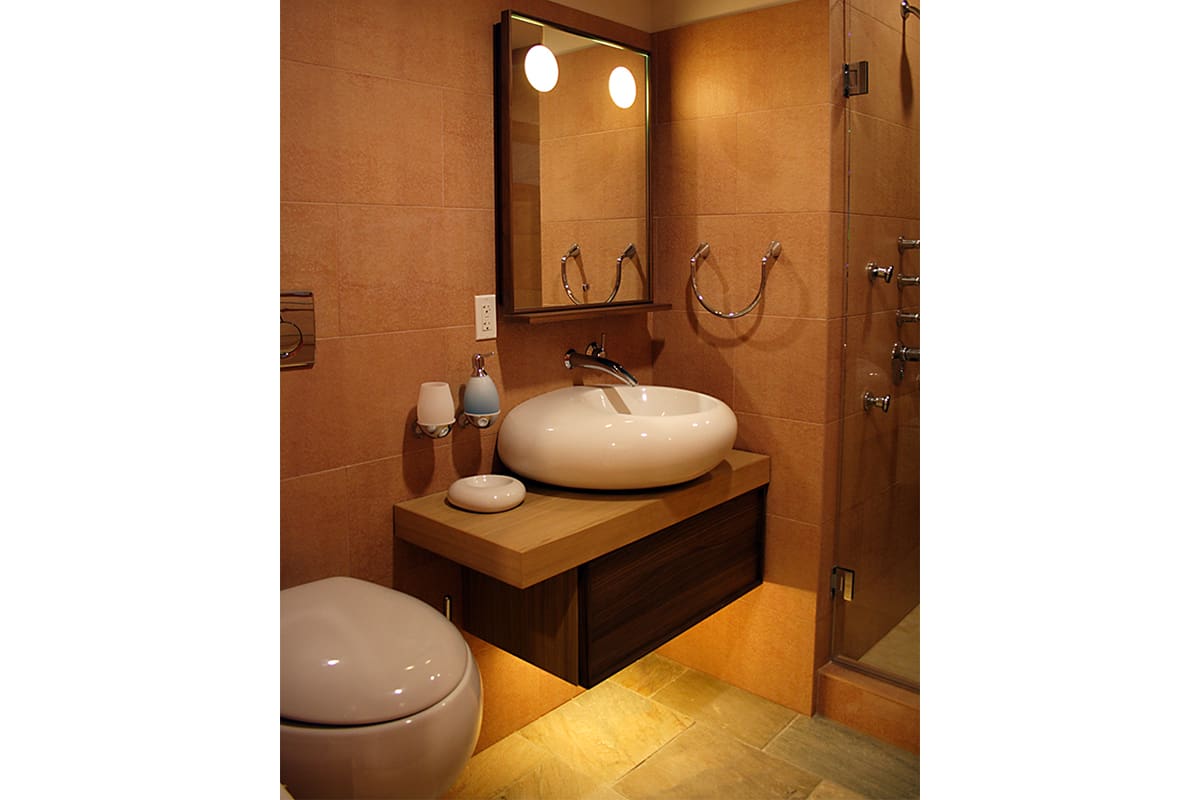
Should You Place a Shower Head on an Exterior Wall?
In my professional opinion, most of the time the answer is no. You should not place a shower head on an exterior wall unless you frame out the wall in order to prevent pipes from freezing and to maintain compliance with building code.
By building out your wall, you create the necessary distance to alleviate any possibility of freezing temperatures reaching your supply lines.
Even in regions where freezing temperatures are not experienced, your local building code may forbid supply lines in exterior walls. It’s always best to check with your local code enforcement department before you solidify your remodeling plans.
Is There an Alternative to Exterior Wall Shower Heads?
Yes! For those who truly wish to relocate their shower head, I suggest running supply lines through the ceiling and connecting them to a rain shower head, which will come out of the ceiling.
If the space above the ceiling is an attic, I recommend installing electric heating tape as well. Attics are not always immune to freezing weather, no matter how well they are insulated.
This is a great workaround due to the fact that you can get your shower head in the position that you wish for it to be, as well as ensure that your pipes do not freeze. The benefit to this solution is that your pipes will be easily accessible via the attic in the event that you need to insulate and/or heat them.
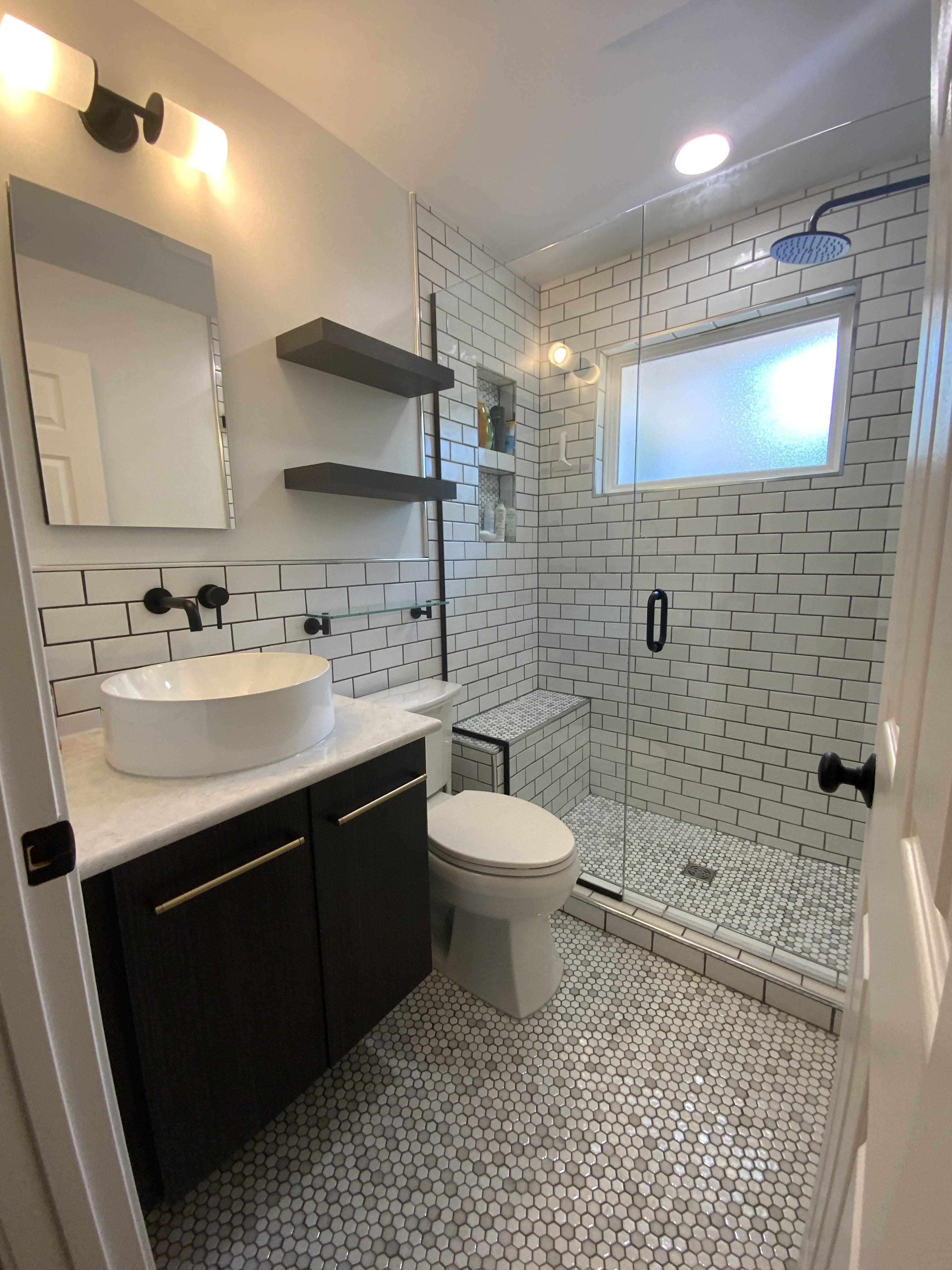
It’s Getting Late, Let’s Conclude
In regions that experience freezing temperatures, building code forbids water supply lines inside of exterior walls unless proper accommodations are made, such as insulating the pipe and/or using electric heating tape.
Most of the time, placing your shower head on an exterior wall is not recommended or even feasible. Instead, you may wish to run your supply lines through the ceiling, and connecting them to a rain shower head that is mounted to the ceiling. Doing so will ensure that your pipes are accessible via an attic if need be.
I hope that this article helped, and I wish you the best of luck on your remodeling project!
About the Author

Thomas Borcherding is a professional kitchen & bath designer, and a member of the National Kitchen & Bath Association (NKBA). He is the second-generation owner of Homestar Design Remodel, and takes great joy in providing those in St. Louis with high-quality, affordable home remodeling.


